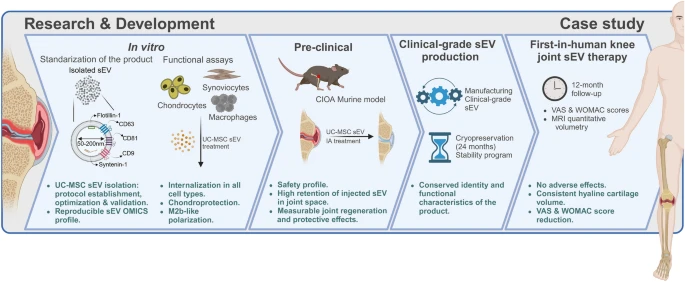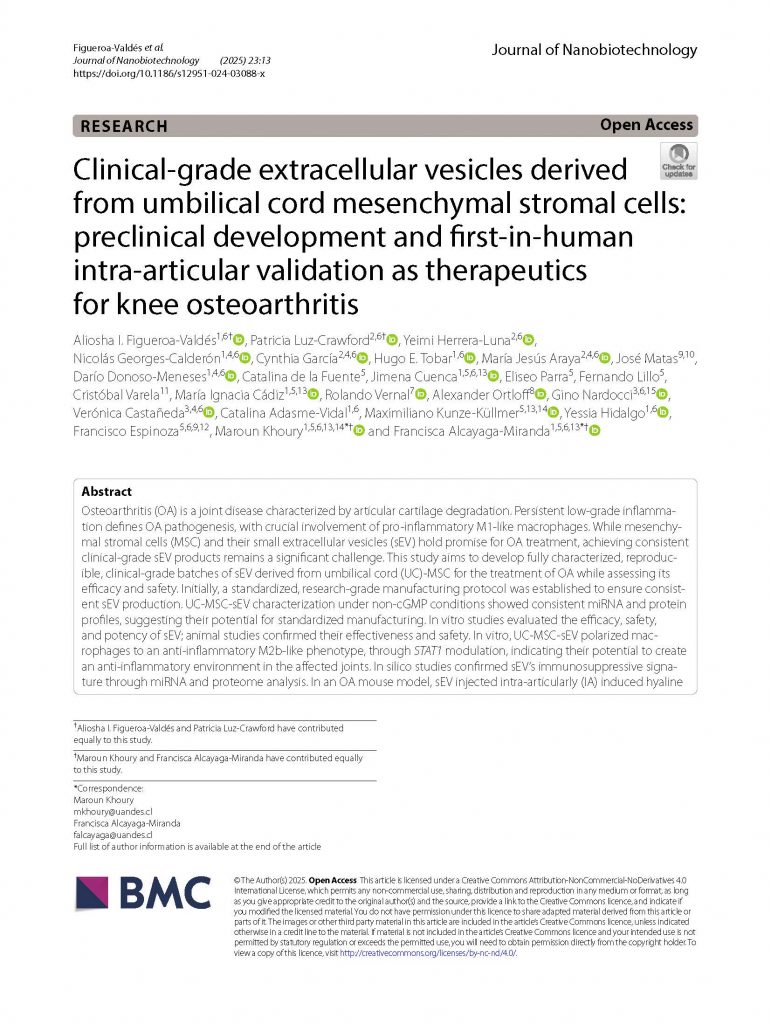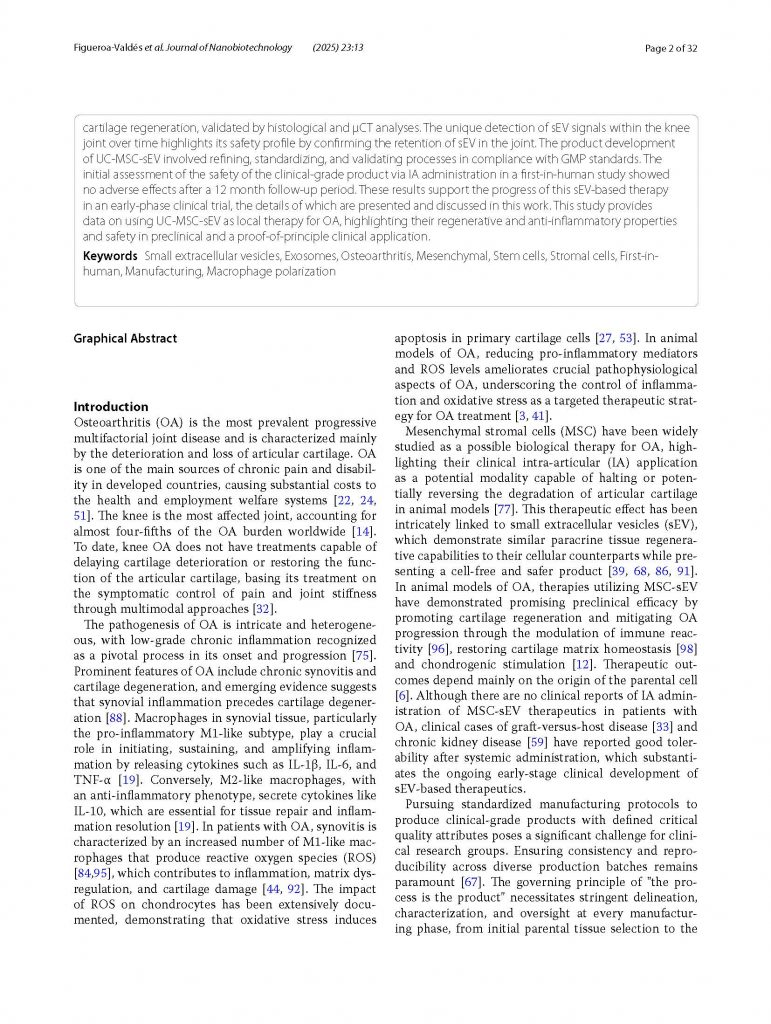José Matas, a traumatologist at Clínica Universidad de los Andes, was in charge of administering the treatment.
José Matas, traumatologist at Clínica Universidad de los Andes , who was in charge of administering the treatment to the patient, explained that the improvements presented after the treatment were related to a considerable decrease in pain and an increase in the mobility and function of the joint. "It is impossible to compare this therapy with the usual treatments for osteoarthrosis of the knee, since it was only one patient. However, advanced acellular therapies in the treatment of osteoarthrosis generate a lot of expectation of improvement in the medical community."
A 56-year-old Chilean woman with osteoarthritis of the knee and constant pain became the first patient in the world to receive a dose of intra-articular therapy based on small extracellular vesicles enriched with exosomes, presenting a remarkable and long-lasting improvement. The results, which were described as promising, were published by the scientific journal Journal of Nanobiotechnologyon January 13th, 2025.
Extracellular vesicles are nanoparticles secreted by cells and fulfill various functions ranging from intercellular communication to modulation of the immune response. Among the extracellular vesicles are exosomes, which also contribute to cellular communication, but stand out for their role in tissue repair in the human body.
Researchers from the IMPACT center, in collaboration with the start-up EVast Bio , oriented to the development of extracellular vesicles, lead this study to deepen the therapeutic use of these vesicles in knee osteoarthritis, achieving the milestone of being the first patient in the world to receive such a therapy for this disease.


For Francisca Alcagaya, principal investigator of IMPACT, this research represents an important advance in the field of regenerative therapies: "This is the first time that extracellular vesicles derived from umbilical cord stromal cells have been shown to be used as a safe treatment for osteoarthritis of the knee. What is relevant is that they not only help to reduce inflammation, but also protect cartilage, opening the door to less invasive and more effective treatments for joint diseases. The results in this patient are very promising. She was able to significantly relieve pain, improve her mobility and prevent further deterioration of the joint, with effects that were sustained for one year. This suggests that this therapy could become a real alternative to options such as traditional infiltrations or even surgery, offering longer-lasting and less invasive benefits," she said.
When asked about the future of advanced therapies in the treatment of osteoarthritis, the expert pointed out that, in her opinion, the future of these therapies is very promising. "Advances such as the use of extracellular vesicles bring us closer to treatments that not only alleviate symptoms, but also have the potential to regenerate damaged tissue and modify the course of diseases such as osteoarthritis. If we continue to move in this direction, we could transform the way these pathologies are managed."
Aliosha I. Figueroa-Valdés,
Patricia Luz-Crawford,
Yeimi Herrera-Luna,
Nicolas Georges-Calderon,
Cynthia Garcia,
Hugo E. Tobar,
María Jesús Araya,
José Matas,
Darío Donoso-Meneses,
Catalina de la Fuente,
Jimena Cuenca,
Eliseo Parra,
Fernando Lillo,
Cristóbal Varela,
María Ignacia Cádiz,
Rolando Vernal,
Alexander Ortloff,
Gino Nardocci,
Verónica Castañeda,
Catalina Adasme-Vidal,
Maximilian Kunze-Küllmer,
Yessia Hidalgo,
Francisco Espinoza,
Maroun Khoury &
Francisca Alcayaga-Miranda



